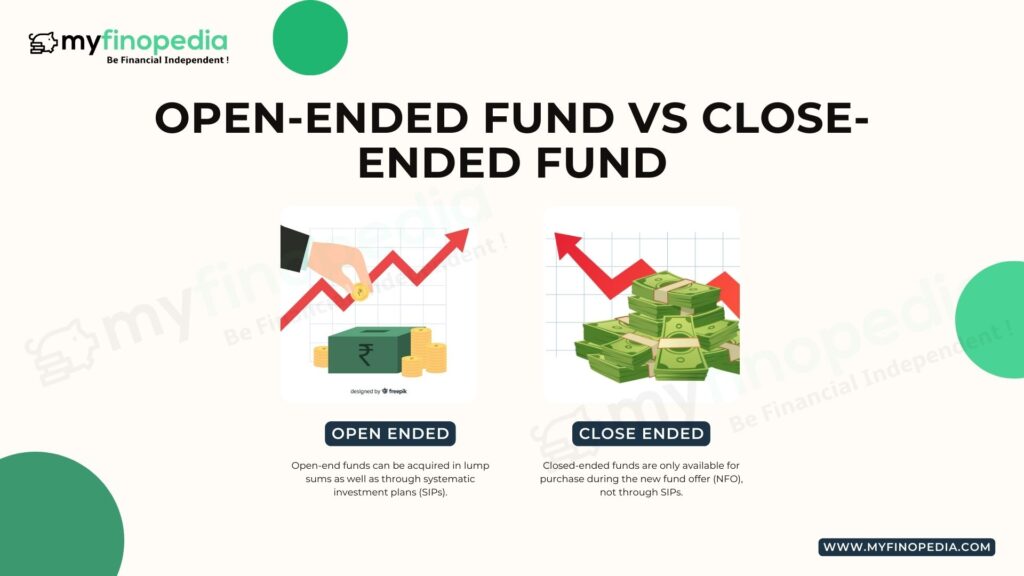When it comes to investing flexibility and ease of purchase and sale, the two types of mutual funds, open ended and close-ended funds, may occasionally be confused Open-end funds typically permit investors to join or leave at any time, including following the NFO. Closed-end funds, on the other hand, allow investors to purchase units of a closed-ended scheme only at the fund’s initial public offering (IPO).
Closed-end funds and open-end funds differ greatly in terms of structure, pricing, portfolio, and sales, as will be discussed below in this article.
Main Differences Between Open-ended & Close-ended Funds
The key differences between open-end and close-end funds are listed below:-
- When existing investors acquire more units or new investors purchase units in an open-end scheme, a sale transaction takes place. It takes place at a sale price that is based on the NAV When investors choose to return any of their units to the plan, repurchase transactions take place. They include receiving the corresponding value in new units.
Closed-end funds only allow investors to purchase units from the fund during the NFO of a close-ended scheme with a fixed maturity. After the NFO, the fund develops provisions for the units to be swapped in a stock exchange by listing the scheme there. Since post-NFO unit sales and purchases are made to or from third parties on the stock exchange rather than the scheme itself, the unit capital of the scheme stays constant or fixed. - Open ended funds, with the exception of ELSS funds, whose units are locked in for three years beginning on the day of investment, have the potential for high liquidity, allowing for unit purchases or sales at any time.
Closed-end funds, on the other hand, do not offer liquidity during the lock-in period and do not receive redemption profits until the lock-in term has been compulsory. - Open-end fund prices are set once daily at their NAV to reflect the performance of the fund. This figure for the fund is equal to assets minus liabilities. At this price, shares of the Fund may be acquired only on that day.
Shares in closed-end investments serve as market values rather than the fund’s net asset value (NAV). You could purchase or sell them using the price the fund is trading at that moment. - Open-end funds can be acquired in lump sums as well as through systematic investment plans (SIPs). Furthermore, SIPs provide the benefit of rupee cost averaging of the unit price, whereas lump sum investments allow you to invest based on market level and add details when markets go down.
Closed-ended funds are only available for purchase during the new fund offer (NFO), not through SIPs. Furthermore, because these funds do not accept assets after the NFO period has expired, no averaging is possible. - Since you can only purchase close ended funds during their NFO period, there is no track record available while investing in them. However, you can check the track record of the schemes’ performances when investing in open ended funds.
The question is whether to opt for open ended or closed ended mutual funds. Fund managers can invest for the long run with open-ended funds since they don’t have to worry about redemption. SIPs are a better option than market volatility for investors who want to take advantage of rupee cost averaging or who want to invest. An open-ended fund is a significantly superior choice because it enables you to invest whenever you want based on your surpluses and because they are, liquid and they can be redeemed at any time. Investors can enter and exit open-ended mutual fund schemes at their convenience, and can regularly buy and sell units. A predetermined number of units are sold by closed-end funds, or they are purchased on the stock market.






